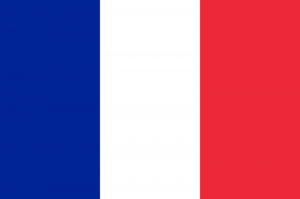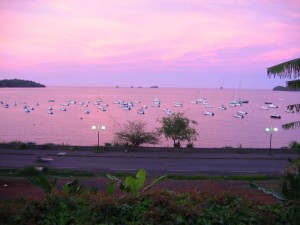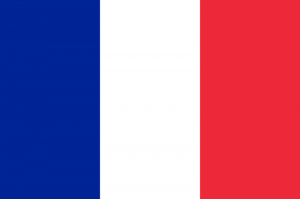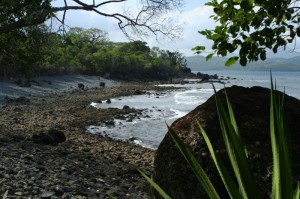Mayotte

Mayotte l’ile 101
Le 31 mars 2011, Mayotte est devenue le 101e département français : ses habitants confient leurs réticences, évoquent leurs espoirs et présentent leur île méconnue.
Mayotte (French: Mayotte, pronounced: [majɔt]; Shimaore: Maore, IPA: [maˈore];Malagasy: Mahori) is an overseas department and region of France consisting of a main island, Grande-Terre (or Maore), a smaller island, Petite-Terre (or Pamanzi), and several islets around these two. The archipelago is located in the northern Mozambique Channel in the Indian Ocean, namely between northwestern Madagascar and northeastern Mozambique. Mayotte’s area is 374 square kilometres (144 sq mi) and, with its 212,645 people, is very densely populated at 569 per km² (1,473 per sq mi).
Its biggest city and prefecture is Mamoudzou. The territory is geographically part of the Comoro Islands, but the people of Mayotte chose to remain politically a part of France in the 1975 referendum. The territory is also known as Maore, the native name of its main island, especially by advocates of its inclusion in the Union of Comoros. In a 2009 referendum, the population overwhelmingly approved accession to status of department (95.2% voted in favour of departmental status). Mayotte became an overseas department on 31 March 2011 and will become an Outermost region of the European Union on 1 January 2014.
Geography
Geography of Mayotte – List of islands of Mayotte
The term Mayotte (or Maore) may refer to the group of islands, of which the largest is known as Maore (French:Grande-Terre), and it includes Maore’s surrounding islands, most notably Pamanzi (Petite-Terre), or to the largest island mentioned.
The main island, Grande-Terre (or Maore), geologically the oldest of the Comoro Islands, is 39 kilometres (24 mi) long and 22 kilometres (14 mi) wide, and its highest point is Mount Benara, at 660 metres (2,165 ft) above sea level. Because of the volcanic rock, the soil is relatively rich in some areas. A coral reef encircling much of the island ensures protection for ships and a habitat for fish. Dzaoudzi was the capital of Mayotte (and earlier the capital of all the colonial Comoros) until 1977. It is situated on Petite-Terre (or Pamanzi), which at 10 square kilometres (4 sq mi) is the largest of several islets adjacent to Maore.
History of the Comoros for the history of Mayotte before 1974.
In 1500, the Maore or Mawuti (contraction of the Arabic جزيرة الموت Jazīrat al-Mawt -meaning island of the dead / of death and corrupted to Mayotte in French) sultanate was established on the island. In 1503, Mayotte was observed by Portuguese explorers, but not colonized.
In 1832, it was conquered by Andriantsoly, former king of Iboina on Madagascar; in 1833, conquered by the neighboring sultanate of Mwali (Mohéli island in French); on 19 November 1835, again conquered by the Ndzuwani Sultanate (Anjouan sultanate in French; a governor was installed with the unusual Islamic style of Qadi (from the Arabic قاض which means judge), sort of a ‘Resident Magistrate‘ in British terms), but in 1836, regained its independence under a last local Sultan.
Mayotte was ceded to France in 1841. It was the only island in the archipelago that voted in referendums in 1974 and 1976 to retain its link with France and forgo independence (with 63.8% and 99.4% of votes respectively). The Comoros continue to claim the island. A draft 1976 United Nations Security Council resolution recognizing Comorian sovereignty over Mayotte, supported by 11 of the 15 members of the Council, was vetoed by France. It was the last time, as of 2011, that France cast a lone veto in the Council. The United Nations General Assembly has adopted a series of resolutions on the issues, whose tenor can be gauged from their title: “Question of the Comorian Island of Mayotte” up to 1995. Since 1995, the subject of Mayotte has not been discussed by the General Assembly.
 Sea near Mamoudzou.
Sea near Mamoudzou.
Mayotte became an overseas department of France in March 2011 in consequence of a 29 March 2009 referendum. The outcome was a 95.5 per cent vote in favour of changing the island’s status from a French “overseas community” to become France’s 101st département. Its non-official traditional Islamic law, applied in some aspects of the day-to-day life, will be gradually abolished and replaced by the uniform French civil code. Additionally, French social welfare and taxes apply in Mayotte, though some of each will be brought in gradually. Comoros continues to claim the island, while criticising the foreign military base there.
The politics of Mayotte takes place in a framework of a parliamentary representative democratic French overseas community, whereby the President of the General Council is the head of government, and of a multi-party system. Executive power is exercised by the government.
Mayotte also sends one deputy to the French National Assembly and two senators to the French Senate.
The situation of Mayotte proved to be awkward for France: while the local population very largely did not want to be independent from France and join the Comoros, some international criticism from post-colonial leftist regimes was heard about Mayotte’s ongoing ties to France. Furthermore, the peculiar local administration of Mayotte, largely ruled by customary Muslim law, would be difficult to integrate into the legal structures of France, not to mention the costs of bringing the standards of living to levels close to those of Metropolitan France. For these reasons, the laws passed by the national parliament had to state specifically that they applied to Mayotte for them to be applicable on Mayotte.
The status of Mayotte was changed in 2001 towards one very close to the status of the Departments of France, with the particular designation of departmental collectivity. This change was approved by 73% of voters in a referendum. After the constitutional reform of 2003 it became an overseas collectivity while retaining the title “departmental collectivity” of Mayotte.
Mayotte became an overseas department of France (département d’outre-mer, DOM) on 31 March 2011 following the result of the March 2009 Mahoran status referendum, which was overwhelmingly approved by around 95% of voters. Becoming an overseas department will mean it will adopt the same legal and social system as used in the rest of France. This will require abandoning some customary laws, adopting the standard French civil code, and reforming the judiciary, educational, social and fiscal systems, and will take place over a period of about 20 years.
Despite its domestic constitutional evolution from the status of an overseas collectivity to that of an overseas department, effectively becoming a full constituent territory within the French Republic, with regards to the European Union, Mayotte remains an ‘Overseas country and territory’ (OCT) in association with the Union (as per Article 355(2) TFEU) and not a constituent territory of the European Union in the same way as the other four overseas departments. However following a unanimous vote in the European Council on 12 June 2012, Mayotte will now become an outermost region of the European Union on 1 January 2014. This successful agreement between the 27 member states follows a petition made by the French government for Mayotte to become an integral territory of the European Union nonetheless benefiting from the derogation clause applicable in existing Outermost regions, namely Article 349 TFEU, as favoured in a June 2012 European Commission opinion on Mayotte’s European constitutional status.



